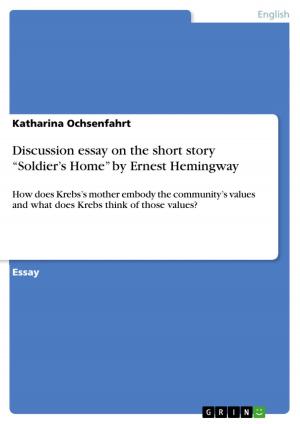Peaces different shades for a common duty
Nonfiction, Social & Cultural Studies, Political Science, International, International Security| Author: | Luigi Nicoletti | ISBN: | 9783640329120 |
| Publisher: | GRIN Publishing | Publication: | May 22, 2009 |
| Imprint: | GRIN Publishing | Language: | English |
| Author: | Luigi Nicoletti |
| ISBN: | 9783640329120 |
| Publisher: | GRIN Publishing |
| Publication: | May 22, 2009 |
| Imprint: | GRIN Publishing |
| Language: | English |
Research Paper (undergraduate) from the year 2008 in the subject Politics - International Politics - Topic: Peace and Conflict Studies, Security, grade: Master Degree, , language: English, abstract: The point of starting this paper is the affirmation of Macharia Munene :'[...],however, is that conflicts are natural and that the distinction is that some conflicts are positive and other are negative.'(MACHARIA MUNENE,(Unpublished):2). From this point of view we can consider that also for each Human Being the Conflict is a natural condition that is in birth in each Human Being. If we follow this logic we are now able to catalyze our attention on the human being. So, we have to consider in each human being that there are some different instinct, Sigmund Freud concentrate these instincts in two main categories 'Thanatos' or the death instinct, and 'Eros' , the life instinct (BARASH,D.P. WEBEL, C.P. 2002:125).At the same time the environment where each human being lives in could be more or less violent or more or less peaceful, it depends on different aspects (culture, religion, history, traditions etc..). The relationship, between human beings (with their behavior and their instincts) and the environment which is around the subject, can essentially turn out into four different outputs1 .In order to analyze these four main outputs we have to consider the concepts developed by Fischer D. of Positive and Negative feedback loops. Trough these two concepts we can observe how the interactions between a human being and its own environment are going to create four different outputs that can be assemble in two categories: Negative Feedback Loops and Positive Feedback Loops. On one hand 'In a Negative Feedback Loop, a trend gives rise to counter-forces which hold it in check' (FISCHER,D.2007:189) on the other hand 'In a Positive Feedback Loop, a trend gives rise to forces which increase the trend' (FISCHER,D,2007:189) After having explained on which axles the human instinct and the environment that it surrounds the subject stir we can now observe that there are a lot of combinations between human being instinct and environment. Each combination is different because the human beings and the environments where these live are different too. From this point we will go to analyze the four extreme of these combinations remembering that however that these combinations are only useful for logical reconstructions to understand some more complex realities.
Research Paper (undergraduate) from the year 2008 in the subject Politics - International Politics - Topic: Peace and Conflict Studies, Security, grade: Master Degree, , language: English, abstract: The point of starting this paper is the affirmation of Macharia Munene :'[...],however, is that conflicts are natural and that the distinction is that some conflicts are positive and other are negative.'(MACHARIA MUNENE,(Unpublished):2). From this point of view we can consider that also for each Human Being the Conflict is a natural condition that is in birth in each Human Being. If we follow this logic we are now able to catalyze our attention on the human being. So, we have to consider in each human being that there are some different instinct, Sigmund Freud concentrate these instincts in two main categories 'Thanatos' or the death instinct, and 'Eros' , the life instinct (BARASH,D.P. WEBEL, C.P. 2002:125).At the same time the environment where each human being lives in could be more or less violent or more or less peaceful, it depends on different aspects (culture, religion, history, traditions etc..). The relationship, between human beings (with their behavior and their instincts) and the environment which is around the subject, can essentially turn out into four different outputs1 .In order to analyze these four main outputs we have to consider the concepts developed by Fischer D. of Positive and Negative feedback loops. Trough these two concepts we can observe how the interactions between a human being and its own environment are going to create four different outputs that can be assemble in two categories: Negative Feedback Loops and Positive Feedback Loops. On one hand 'In a Negative Feedback Loop, a trend gives rise to counter-forces which hold it in check' (FISCHER,D.2007:189) on the other hand 'In a Positive Feedback Loop, a trend gives rise to forces which increase the trend' (FISCHER,D,2007:189) After having explained on which axles the human instinct and the environment that it surrounds the subject stir we can now observe that there are a lot of combinations between human being instinct and environment. Each combination is different because the human beings and the environments where these live are different too. From this point we will go to analyze the four extreme of these combinations remembering that however that these combinations are only useful for logical reconstructions to understand some more complex realities.















